Restoring Natural Appearance to Damaged Eyes
Home / Restoring Natural Appearance to Damaged Eyes


Keratopigmentation: Restoring Natural Appearance to Damaged Eyes
The human eye is one of the most intricate and fascinating organs of the body. Beyond its critical role in vision, the eye is also a vital component of one’s facial aesthetics and self-expression. For individuals who have suffered eye injuries, congenital defects, or diseases that cause the eye to lose its natural pigment and appear white, the emotional and psychological toll can be immense. Fortunately, advances in ocular surgery have introduced keratopigmentation as a transformative solution to restore the eye’s natural appearance.
In this article, we will explore keratopigmentation in depth, focusing on its applications for damaged eyes, the surgical process, the challenges, and how chromatic eyes, a leading clinic that has become a global pioneer in this life-changing procedure.
What Is Keratopigmentation?
Keratopigmentation, derived from the Greek words “kerato” (cornea) and “pigmentation” (coloration), is a minimally invasive surgical technique aimed at altering or restoring the color of the cornea. Initially developed for purely cosmetic purposes, the procedure has evolved to address various medical needs, particularly for patients with damaged or pigment-less eyes.
Key Objectives of Keratopigmentation
Aesthetic Restoration:
Recreating a natural eye appearance for individuals with disfigured or depigmented eyes.
Improved Confidence:
Enhancing the psychological well-being of patients who may feel self-conscious about their eye’s appearance.
Medical Relief:
Addressing certain functional issues, such as light sensitivity, that accompany conditions like aniridia.


Why Do Eyes Lose Their Pigment?
The loss of natural pigment in the eye can occur for various reasons, each presenting unique challenges for surgeons performing keratopigmentation.
Corneal Scars
Corneal scars result from trauma, infection, or surgery, causing the cornea to appear opaque or white. These scars not only impair vision but also significantly alter the eye’s aesthetic.
Leukoma
Leukoma refers to a dense, white opacity on the cornea, often caused by infections such as herpes simplex keratitis or by injuries. These opacities make the eye appear lifeless and unpigmented.
Aniridia
A rare congenital condition, aniridia is characterized by the partial or complete absence of the iris, resulting in a pale, white eye with no visible iris pattern.
Chemical Burns
Severe chemical injuries can cause significant corneal damage, leading to depigmentation and scarring. Restoring the appearance of the eye in such cases is particularly challenging.
Post-Surgical Complications
Certain surgeries, especially those involving corneal transplantation or other invasive procedures, can result in a lack of pigmentation or irregular eye appearance
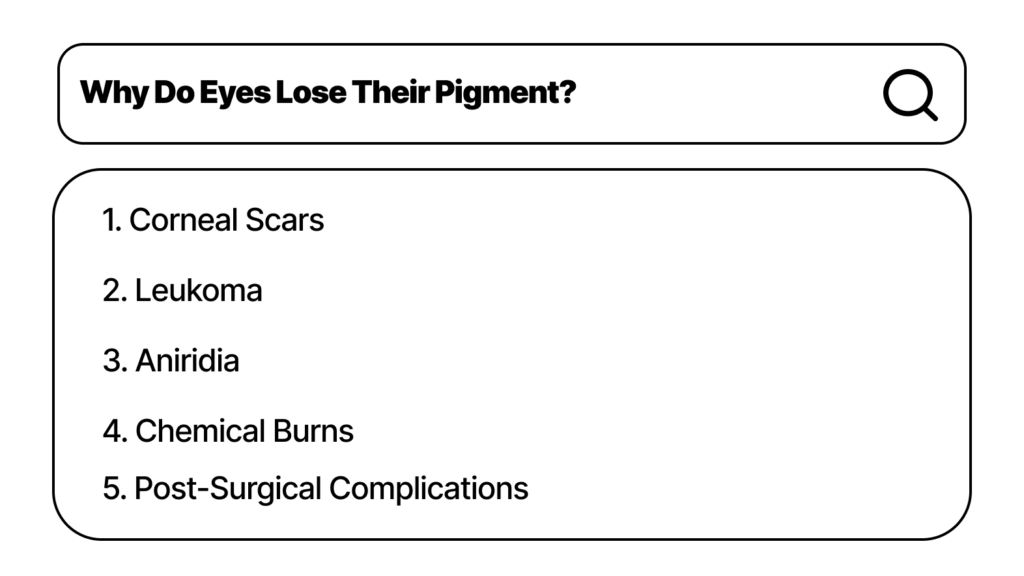

How Does Keratopigmentation Work?
The success of keratopigmentation lies in its precise and meticulous execution, which combines advanced technology with the surgeon’s artistic skills
Step 1: Preoperative Evaluation
Every patient’s condition is unique, and a detailed preoperative evaluation is critical to the success of keratopigmentation. This includes:
– Assessing corneal thickness and structure.
– Using advanced imaging to map the cornea’s topography.
– Discussing the desired outcome with the patient to align expectations.
Step 2: Creating the Corneal Pocket or Tunnel
Using a **femtosecond laser**, a small pocket or tunnel is created within the corneal stroma. This laser technology ensures precision, minimizes risks, and creates an ideal space for pigment deposition.
Step 3: Injecting the Pigment
Biocompatible pigments, specially designed for ocular use, are carefully injected into the corneal pocket. For damaged eyes, the pigment is customized to replicate the natural patterns and colors of a healthy iris.
Step 4: Fine-Tuning the Appearance
Once the pigment is in place, the surgeon adjusts it to achieve a natural and symmetrical look. This step is crucial in ensuring that the treated eye matches the unaffected eye, if applicable.
Step 5: Recovery and Follow-Up
Patients typically recover within 3 to 7 days, although minor symptoms such as dryness or light sensitivity may persist temporarily. Regular follow-up visits ensure that the results are stable and that there are no complications.
What Makes Keratopigmentation for Damaged Eyes Different?
While keratopigmentation for cosmetic purposes is relatively straightforward, treating damaged eyes presents additional complexities.
Irregular Corneal Structures
Damaged eyes often have irregular or compromised corneal anatomy, requiring surgeons to adapt their techniques for each patient.
Customized Pigment Matching
Achieving a realistic appearance involves carefully matching the pigment to the patient’s natural eye color or their desired color.
Psychological Considerations
Patients with damaged eyes often have significant emotional scars. The procedure not only addresses physical appearance but also helps restore confidence and self-esteem.

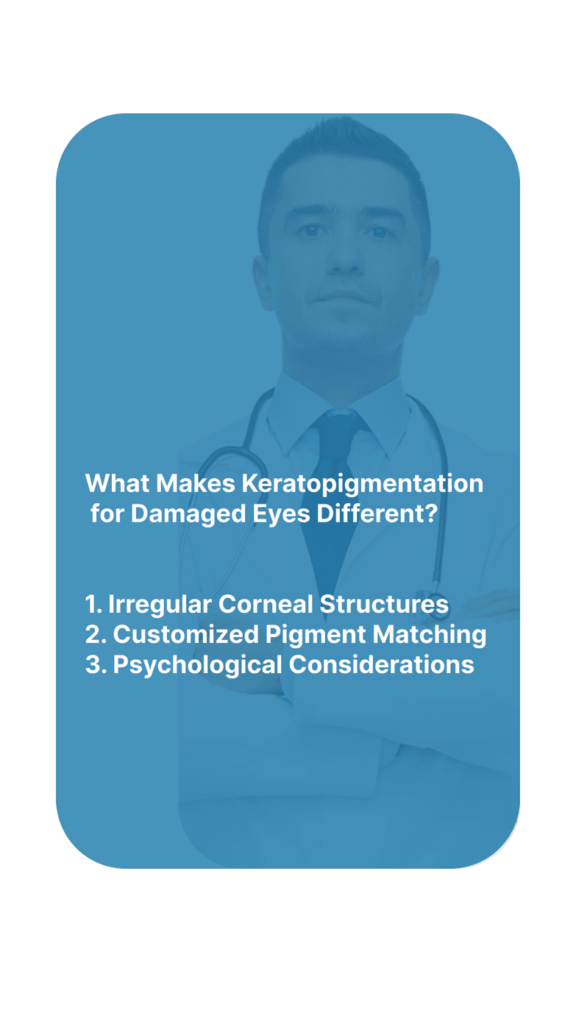
chromatic eyes: A Global Leader in Keratopigmentation
Located in Tehran, Iran, chromatic eyes has established itself as a premier destination for keratopigmentation, attracting patients from around the world. The clinic is renowned for its innovative techniques, cutting-edge technology, and highly experienced surgeons.
Why Choose chromatic eyes?
Expertise in Damaged Eyes
chromatic eyes specializes in treating complex cases involving damaged and pigment-less eyes. The clinic’s surgeons have successfully restored natural eye appearances for hundreds of patients, even in cases considered too challenging by other institutions.
Advanced Technology
Equipped with the latest femtosecond laser systems and state-of-the-art imaging tools, chromatic eyes ensures precision and safety in every procedure.
Comprehensive Patient Care
From initial consultations to postoperative follow-ups, chromatic eyes offers a seamless experience for patients. International patients benefit from the clinic’s full-service approach, including visa support, accommodation arrangements, and translation services.
Proven Track Record
Chromatic Eyes’ portfolio includes numerous success stories of patients who have regained confidence and satisfaction after undergoing keratopigmentation.


Patient Success Stories
Case 1: Transforming Trauma into Triumph
A 40-year-old man from Iraq suffered a chemical burn that left his eye white and disfigured. After a successful keratopigmentation procedure at chromatic eyes, his eye was restored to a natural appearance, enabling him to resume his normal life with confidence.
Case 2: A New Beginning After a Devastating Accident
A 19-year-old woman from Oman experienced a life-altering accident that left her with significant corneal damage. The injury caused her cornea to develop dense, white cloud-like opacities, resulting in a loss of vision and a disfigured appearance of the eye. Struggling with the physical and emotional impact of the accident, she sought help at chromatic eyes.
Using advanced keratopigmentation techniques, the clinic’s skilled surgeons were able to restore the natural appearance of her eye by recreating a realistic iris pattern that seamlessly covered the damaged areas. While the procedure primarily addressed the aesthetic aspect, it also played a pivotal role in boosting her confidence and helping her reintegrate into her daily life with renewed self-assurance. This case exemplifies how chromatic eyes’ expertise transforms not only appearances but also lives.
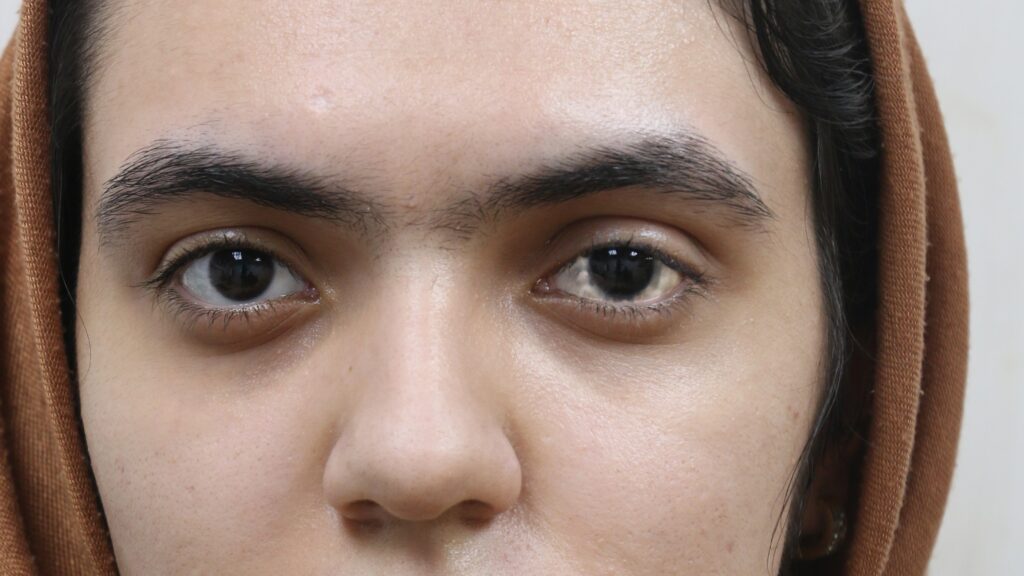

Challenges in Keratopigmentation for Damaged Eyes
While keratopigmentation offers life-changing benefits, it is not without challenges:
Precision in Pigment Application
Recreating the natural patterns of an iris requires a combination of technical skill and artistic ability.
Long-Term Stability
Ensuring that the pigments remain stable over time is an ongoing area of research and development.
Managing Patient Expectations
It is essential to set realistic expectations regarding the outcome, especially in cases of severe eye damage.
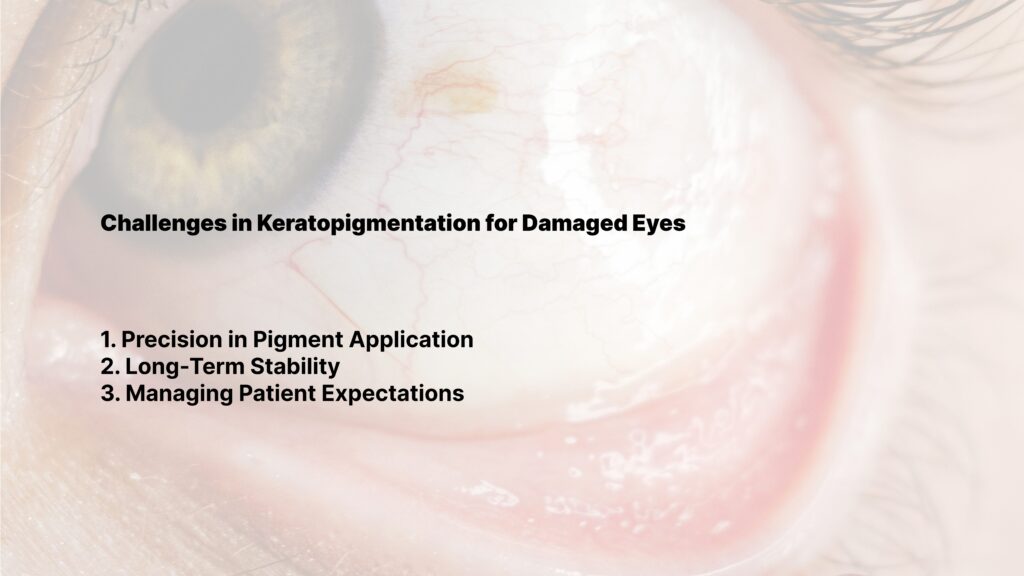
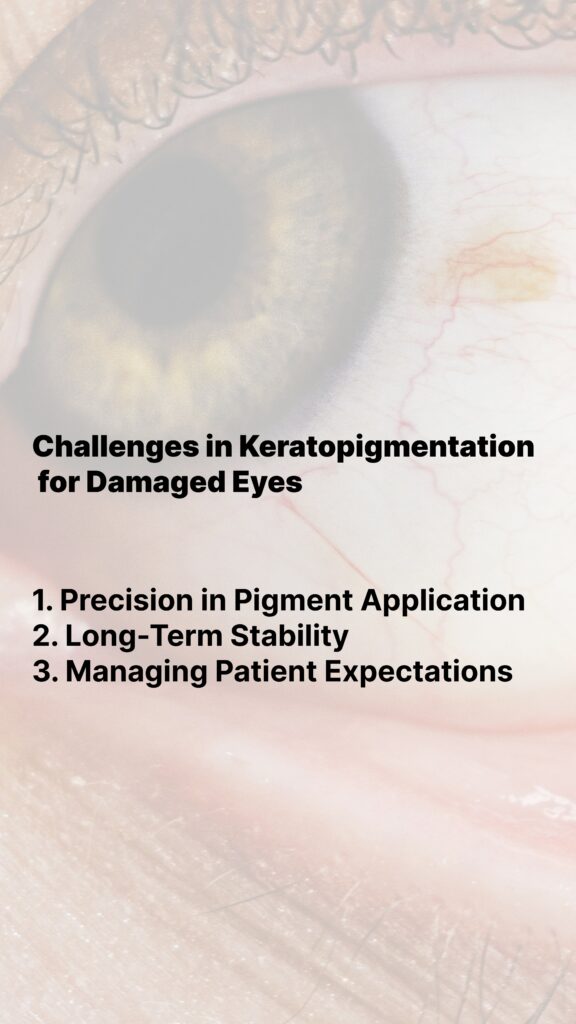
The Future of Keratopigmentation
The field of keratopigmentation continues to evolve, with ongoing advancements aimed at improving outcomes for patients with damaged eyes.
Improved Pigment Formulations
Researchers are developing pigments that are more durable, vibrant, and biocompatible.
Robotics in Surgery
The integration of robotic systems in ocular surgery could enhance precision and reduce human error.
Expanded Applications
Keratopigmentation may soon be used to treat other conditions, such as heterochromia or light sensitivity, further broadening its scope.
Conclusion
Keratopigmentation is a groundbreaking procedure that offers hope to individuals with damaged, pigment-less eyes. By restoring the natural appearance of the eye, this technique not only enhances aesthetics but also significantly improves the patient’s quality of life.
As a leader in this field, Ceritamed has set a benchmark for excellence, combining technical expertise with compassionate care. Whether for cosmetic enhancement or medical restoration, the clinic’s commitment to innovation and patient satisfaction makes it the go-to destination for keratopigmentation worldwide.
With every success story, Ceritamed continues to transform lives, proving that even the most challenging cases can achieve remarkable outcomes.
Get Your Free Consultation or Book Your Appointment Now
Lorem ipsum dolor sit amet, consec tetur adipiscing elit. Fusce vitae commodo ipsum, eu ullam corper magna. Nam non posuere lacus, eget viverra massa sed magna ligula.
Telephone consultation



